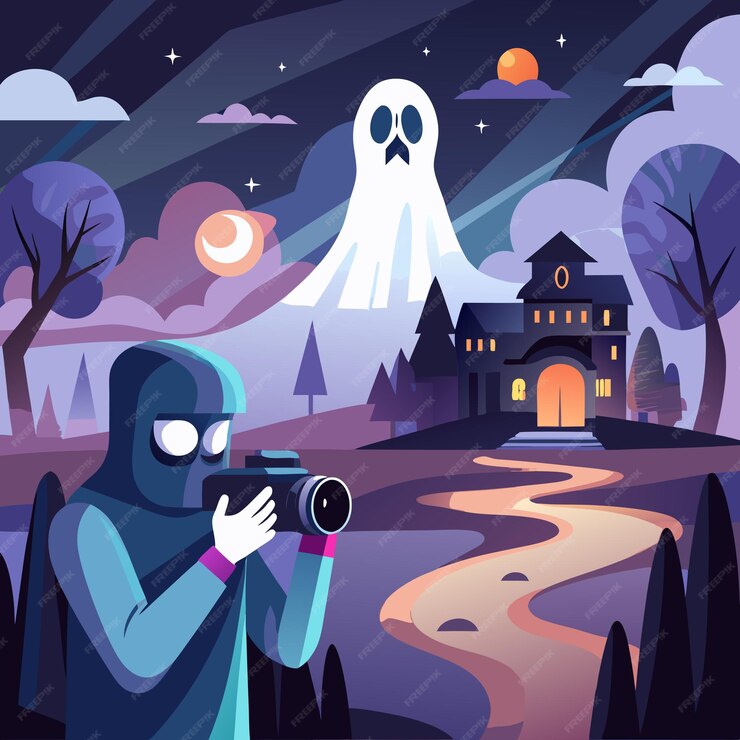Guia Silent Hill Geekzilla: Unraveling the Mysteries of a Horror Classic

Silent Hill is a name that resonates deeply with horror enthusiasts and gamers alike. Since its debut in 1999, the franchise has captivated audiences with its eerie atmosphere, complex narratives, and psychological horror elements. For those who consider themselves part of the Silent Hill community, “Guia Silent Hill Geekzilla” serves as a comprehensive guide to navigating the haunting world of this iconic series. This article explores the essence of Silent Hill, key gameplay mechanics, character analyses, and what makes this series a timeless staple in the horror genre.
The Legacy of Silent Hill
A Brief History
Silent Hill was developed by Konami and released for the PlayStation in 1999. It was initially met with mixed reviews but quickly gained a cult following due to its unique approach to horror, which was vastly different from its contemporaries like Resident Evil. While Resident Evil focused on survival horror with an emphasis on action, Silent Hill immersed players in a psychological landscape filled with existential dread.
Over the years, the franchise has expanded to include numerous sequels, spin-offs, and adaptations, solidifying its place in video game history. Each installment has contributed to a rich tapestry of lore and characters that keep players engaged and intrigued.
The Distinctive Atmosphere
One of the most significant aspects of Silent Hill is its atmosphere. The fog-covered streets and eerie soundscapes create a palpable sense of dread. The use of sound design—often including unsettling ambient noises and distorted music—enhances the feeling of isolation and fear. This unique atmosphere sets the stage for the psychological horror that defines the series.
Gameplay Mechanics
Exploration and Puzzle-Solving
At its core, Silent Hill relies on exploration and puzzle-solving. Players navigate through the haunting environments of the town, searching for clues, keys, and items essential for progression. Unlike typical action games, Silent Hill emphasizes a slower pace that encourages players to immerse themselves in the story and environment.
The puzzles often serve as a reflection of the protagonist’s psychological state, forcing players to confront their fears and traumas. This integration of gameplay mechanics with narrative elements is a hallmark of Silent Hill, creating a more profound emotional experience.
Combat and Survival
Combat in Silent Hill is often clunky and less emphasized compared to other horror titles. This design choice enhances the feeling of vulnerability and fear. Players often find themselves outmatched, requiring them to strategize and avoid confrontations rather than engage in them directly. This aspect adds to the psychological horror, as the fear of the unknown looms large in every encounter.
Characters of Silent Hill
Protagonists and Their Journeys
The protagonists in Silent Hill are often deeply flawed individuals with complex backstories. Each character’s journey is intertwined with their psychological struggles, making them relatable yet tragic.
Harry Mason (Silent Hill) is a grieving adoptive father searching for his missing daughter, Cheryl. His quest leads him to confront his past and the dark secrets of Silent Hill.
James Sunderland (Silent Hill 2) is perhaps the most iconic protagonist in the series. His journey is a harrowing exploration of guilt, loss, and desire as he seeks his deceased wife, Mary. The psychological depth of James’s character makes him a compelling figure, and his experiences resonate with players on a personal level.
Heather Mason (Silent Hill 3) is the daughter of Harry Mason and represents a new generation’s struggles. Her battle against the haunting figures of her past and the town itself encapsulates the franchise’s themes of identity and trauma.
Antagonists and Symbols
Silent Hill is also known for its memorable antagonists, many of whom are manifestations of the protagonists’ inner demons. The symbolic nature of these characters adds layers to the narrative, often representing guilt, fear, and unresolved issues.
Pyramid Head (Silent Hill 2) is perhaps the most recognizable figure in the series. He symbolizes punishment and guilt, reflecting James’s internal struggles. The grotesque design and menacing presence of Pyramid Head leave a lasting impact on players, serving as a reminder of the consequences of one’s actions.
The Themes of Silent Hill
Psychological Horror
Silent Hill stands apart from other horror franchises due to its focus on psychological horror. The game delves into the psyche of its characters, exploring themes of guilt, trauma, and redemption. The supernatural elements often serve as metaphors for the characters’ internal conflicts, blurring the lines between reality and the subconscious.
Isolation and Alienation
The theme of isolation is prevalent throughout the series. Silent Hill is depicted as a deserted town shrouded in fog, symbolizing the characters’ emotional states. This sense of alienation resonates deeply with players, as it mirrors real-life feelings of loneliness and despair. The town becomes a character in itself, reflecting the struggles of those who inhabit it.
The Nature of Fear
Silent Hill explores the nature of fear in a multifaceted manner. Fear is not just an external force; it stems from within. Each character’s fears manifest in unique ways, often rooted in their past traumas. This introspective approach to horror invites players to confront their own fears, making the experience more personal and unsettling.
The Cultural Impact
Influence on Gaming and Media
The impact of Silent Hill extends beyond gaming. Its unique approach to storytelling and psychological horror has influenced various media, including films, books, and art. The franchise’s themes resonate with audiences, inspiring discussions about mental health and trauma.
The Silent Hill Community
The Silent Hill community is a passionate and dedicated group of fans who share their love for the series through fan art, theories, and discussions. Online forums and social media platforms provide spaces for fans to connect and delve deeper into the lore and symbolism of the games. This sense of community enhances the experience of being a Silent Hill enthusiast, fostering camaraderie among those who appreciate the intricate narratives.

Exploring the Guia Silent Hill Geekzilla
A Comprehensive Resource
The “Guia Silent Hill Geekzilla” serves as a valuable resource for both newcomers and seasoned fans. It compiles extensive information on each game in the series, character analyses, and interpretations of themes and symbolism. The guide also includes tips for navigating the puzzles and combat mechanics, ensuring that players can fully immerse themselves in the experience.
Lore and Theories
One of the highlights of the Guia is its exploration of the intricate lore that weaves through the Silent Hill universe. The guide delves into fan theories and interpretations, inviting readers to engage with the narrative on a deeper level. This aspect not only enriches the understanding of the games but also encourages players to form their own conclusions about the characters and storylines.
Artistic Contributions
The Guia also showcases the artistic contributions of fans, including illustrations, fan fiction, and videos. This creative expression allows fans to celebrate their love for the franchise while fostering a sense of belonging within the community.
Conclusion
The Silent Hill franchise has left an indelible mark on the horror genre and gaming culture as a whole. Its blend of psychological horror, complex characters, and immersive storytelling continues to resonate with audiences worldwide. The “Guia Silent Hill Geekzilla” stands as a testament to the enduring legacy of Silent Hill, providing fans with the tools and insights needed to navigate its haunting landscapes. As players explore the depths of this chilling series, they are not just confronting monsters but also the darker corners of the human psyche. Silent Hill remains a powerful exploration of fear, loss, and the struggles that bind us all.

